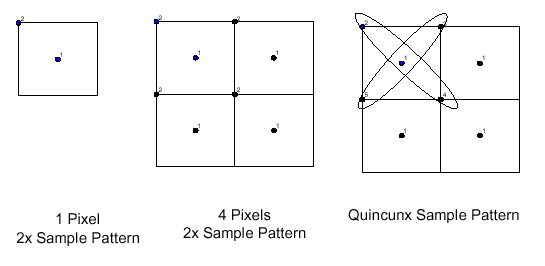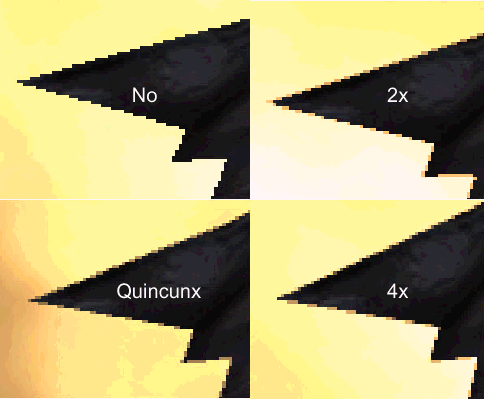How important is Anti-Alaising? Well apparently
important enough for nVidia to develop a new form of AA. Older cards such as the
GeForce 2 and ATi's Radeon series of cards perform anti-alaising by using
supersampling. What that does is in a sense, it makes the videocard render the image
at a much higher resolution usually denoted by the number (eg. 2x
anti-alaising, would render an image from 800x600 to 1600x1200) then it scales the
image back down to the set resolution. Now, the biggest drawback for a gamer
using AA is the performance hit. You're basically dividing your fill rate by
the ratio of AA used! If you're using a very fast card (GeForce2 Ultra),
you can probably get by with max 2x anti-alaising, but if you were unfortunate
and have a GeForce DDR or maybe GeForce 2 GTS, any form of AA can almost
be ruled out. Again, here we hit the memory bottleneck that plagues older
cards. However with the GeForce3, users have a totally different option.

Using Quincunx AA would give you almost he same
quality as 4x AA for the price of 2x! How does it achieve this? By using a
new form of anti-alaising called MultiSampling. What multisampling does is
make the GPU sense the colour of the other pixels around a particular spot and
blends them together.

As you can see, even the background
has been affected. It blends a lot more then the other images.
